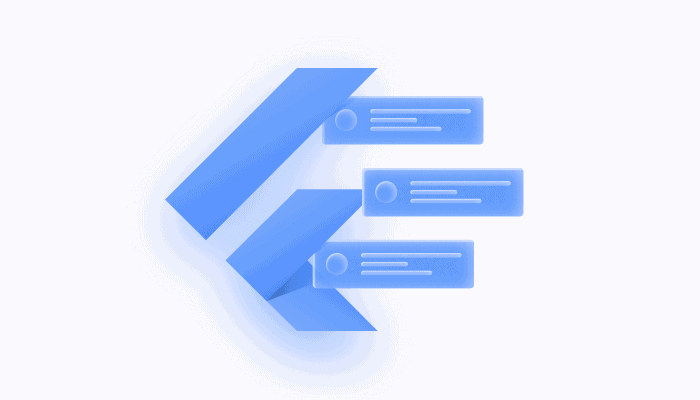
Note: This blog has been updated from a previously published article.
Flutter is an open source software development kit based on the Dart programming language and created by Google. This mobile UI framework offers a wide range of widgets and tools that provide developers an easy way to build fast and attractive desktop and mobile applications for Android, iOS, and more recently Windows, Linux, and MacOS. Since its first stable release in December 2018, Flutter has gone through a plethora of updates that have enhanced its productivity and quality. This past year, with the launch of Flutter 2.0 there have been some noticeable developments. Most significantly, Flutter reached an important milestone as it transitioned from a strictly mobile app software development kit for Android and iOS, to a truly cross-platform technology that allows developers to build sophisticated apps that work beautifully on the web and desktop browsers that run on Windows, Linux, and macOS.
Let’s look at some of the biggest developments in Flutter this year and what it means for the app development community.
2021 Flutter Updates
1. Flutter for Web & desktop
Perhaps the most exciting development this year was Google’s announcement that Flutter’s web support has transitioned from beta channel to the stable channel. As a Google spokesperson declared “Flutter pushes reusability of code to another level with the support of the web.” Flutter 2.0 now officially offers production-quality support for the web, which opens up extension opportunities for web app developers.
Furthermore, Google has made several improvements for web performance optimization, including a new CanvasKit rendering engine and richer platform APIs that allow developers to build modern and graphic-rich web apps with 2D and 3D graphics and interactive, flexible layouts.
Google has also made considerable improvements for supporting Flutter desktop apps including updated features like scrollbars and announced that they had released Flutter’s desktop support in the stable channel under an early release flag. With this, they meant they had provided developers with a “beta snapshot” as a preview of what to expect with the final stable release expected soon.
This means you can now run Flutter apps built with a single code natively in a browser on windows, Linux, and macOS.
The impact of this development on developers and businesses requiring apps is significant. As a truly cross-platform solution that can build beautiful apps that work consistently well on iOS, android, web platforms, Flutter is an extremely attractive choice of SDK. Development teams and business leaders can save significant time and money building apps based on a single source for multiple platforms.
2. Platform Adaptive Apps
In addition to making it possible for Flutter Apps to work on different platforms you also want them to look good. Producing platform adaptive apps is a challenge given that different platforms have different screen sizes, menu systems, and different methods of interaction (e.g. touch screen, keyboard, mouse). The team at Google have been working on platform adaptive app features to meet this change. The latest version of Flutter provides tools you need to customize your apps to meet different platform-specific requirements, so that your app looks and works great on whichever device it’s used on.
3. Null Safety
One great aspect about Flutter is the variety of tools they provide to create a more efficient and faster app-development process. Null safety is one such feature. Null safety helps developers eliminate a whole class of bugs from their code caused by null dereferencing errors during development, rather than at run time. This not only improves app performance by also greatly enhances developer productivity. This year null safety became a stable default feature in Flutter. Furthermore, in addition to writing all new applications with the null safety feature, developers are also able to migrate older apps to null safety.
4. Monetization Features
The folks at Google have found ways to help you commercialize your app.
First, they continued to develop their Google Ads SDK for Flutter for app developers that want to include inline banners and native ads in their apps.
Second, they made it easier and safer for you to make/receive commercial payments with new plugins. They enhanced the in-app purchases plugin, with further security features and moved it to production quality.
They have also, in partnership with Google Pay, launched a new payment plugin. This feature makes it easier for you to embed in-app purchases into your app for both Android and iOS apps to accept payments for good.
If you want to use Flutter to build an e-commerce app, or indeed any app where you need to charge for a product or service, Google has made it simpler and more secure to do so.
There are of course a magnitude of other updates which we briefly summarize here:
- Android apps can use deferred components – now possible to make light-weight apps because there’s no need to load apps with extra code since Flutter elements required for proper functioning can now be downloaded at run-time.
- Updated Flutter DevTools – tools to simplify the process of debugging that work extremely well with Android Studio, IntelliJ Extension, and Visual Studio Code.
- Smoother page transition for iOS – Google has tripled the speed to present the initial page transition for any app targeting iOS.
- Flutter Fix – tool to automatically clean up deprecated APIs in your codebase.
- Flutter Flow – updated low code tool used for building Flutter web apps in your browser with less code.
- 2.5 release sees improvements for Android apps when running in full-screen mode, providing new full-screen options for developers, including ones that can be customized.
Flutter is Here to Stay
If you are part of the flutter development community, you have good reason to be pleased. Clearly, the growing popularity of Flutter shows that it’s here to stay. In May 2021, Google stated that there were over 200,000 Flutter apps in the App Store alone. Google’s ongoing investment in and development of it’s in-house app-building software, means that the Flutter development experience remains an exciting one.
QuickBlox Flutter SDK
If you are planning a new Flutter project that requires real-time communication features then take a look at QuickBlox Flutter SDK and Chat API. Our software is designed to enhance any application by adding live chat, video calling, or video conferencing. Check out our documentation or contact us now to learn more.







I appreciate you sharing this blog post. Thanks.
Great information shared. Really enjoyed reading this post. Thank you author for sharing this post .. appreciated!
The Flutter framework has a lot of potential and is being widely used in app development. It offers a fast and efficient way to develop mobile apps. It has a user-friendly interface and is easy to learn.
Thanks Julia. This is a good observation. We’ve seen a lot of traction among Flutter developers. Please see our free-to-use Flutter chat code sample.